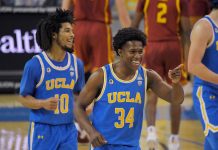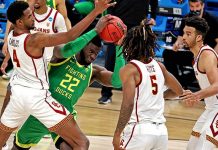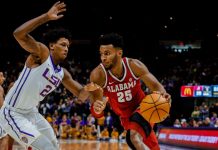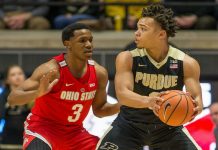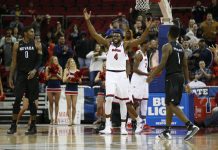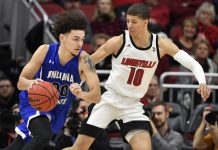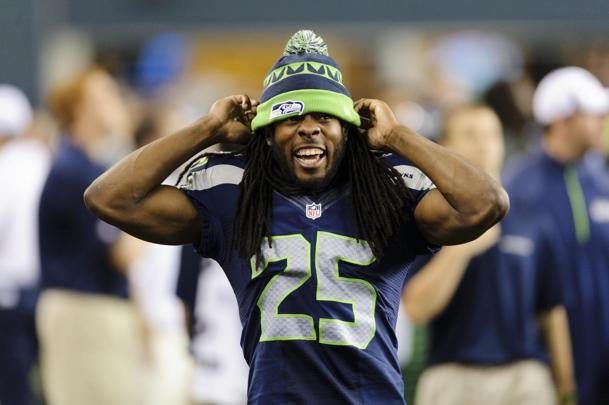MINNEAPOLIS (AP) It is not Duke, North Carolina or UCLA.
Yet when sorting through all the games, personalities and events that helped shape college basketball into the billion-dollar colossus it is today, it’s hard to look past the name ”Virginia.”
It’s the program that gave us one of the sport’s greatest players in Ralph Sampson, and its two biggest upsets, by Chaminade and the world’s most famous No. 16 seed in the University of Maryland-Baltimore County. Virginia is now on the verge of writing a new chapter – one that arguably wouldn’t be appreciated by nearly as many people were it not for the huge platform Virginia hoops helped create.
The Cavaliers play Texas Tech for the NCAA Tournament title Monday with a chance to add ”national champion” to a resume already brimming with color and characters.
”University of Virginia holds a unique place in college basketball,” said Craig Littlepage, the program’s former longtime athletic director and one-time assistant basketball coach. ”Yes, there were some painful experiences. But if you look at them two years down the road, or 10 years, or 20 years, those things (were) good for the overall health of the game.”
Even in today’s overhyped world of instant, nonstop sports analysis, Virginia’s 77-72 loss on Dec. 23, 1982, to Chaminade of the NAIA remains among the handful of the very most shocking upsets in sports history.
The Cavaliers scheduled the game to keep the limbs loose on their way back from Tokyo, where they had played Hakeem Olajuwon, Clyde Drexler and Houston’s Phi Slama Jama juggernaut as part of an early season tournament. Less than two weeks before that, it had been Virginia vs. Patrick Ewing and Georgetown in a meeting then billed as the Game of the Decade .
Virginia stood front-and-center in what college basketball was becoming in the early 1980s, a few years after Larry Bird and Magic Johnson set the stage with their epic meeting in the 1979 national final.
But that Chaminade game broke through the sports pages and onto to the front pages. Virginia was ranked No. 1 in the country and Sampson was the three-time national player of the year. Things like that simply weren’t supposed to happen.
”It was one of those things that, for sure, had to have been a misprint or a miscommunication,” Littlepage said.
It was not.
And in the hours – then days, months and years – that followed, the legend of that upset remains strong.
”We didn’t really realize how big it was until the next day,” Mark Rodrigues, the Chaminade point guard, told The Associated Press in a recent reminisce about the game. ”That’s when AP was calling, everyone’s sports department was calling, it was getting on CNN news, the local news and then you realize what really happened.”
Increasing popularity and more TV exposure helped spread the word about all the good programs out there, and the talent spread out with it.
Upsets became more common. Picking them became a pastime, as the NCAA Tournament bracket morphed into an office pool, and that turned into a small industry of its own.
Virginia was a bit player in – and two-time loser to – Jim Valvano’s North Carolina State team during its miracle run through the 1983 tournament.
The year after Sampson left college, Virginia made the Final Four. That trip was a mere footnote in a 1980s hoops archive that included Villanova’s shocker over Georgetown in the 1985 final and Danny Manning lifting Kansas to a similar upset over Oklahoma in 1988.
The NCAA Tournament expanded to 64 teams to start turning into the behemoth it is today – one that will soon command more than $1 billion a year in TV revenue from CBS and its partners.
Through all that, one unfulfilled occurrence remained the last bastion of ”Things That Will Never Happen” in college hoops. In the 33-year history of the first-round matchups between 1 seeds and 16s, the 16 had never prevailed.
Then came Virginia. Again.
Its 74-54 loss last year to the Terriers of UMBC sent shockwaves across the country and reminded everyone, once again, of why they play these games.
”During last year’s game, I had my phone on the table (on press row) and I started getting texts from old teammates,” said Jim Miller, the Virginia forward who played with Sampson in the 1980s and was calling the UMBC loss on radio last year. ”They all said, `Maybe they’ll stop talking about Chaminade now.”’
More likely, they won’t.
Miller says that even today, the two questions he’s asked the most are: What was it like to play with Ralph Sampson? And, Were you on the team that lost to Chaminade?
And so, in his mind, the real legacy of Virginia basketball might be this: ”On any given night,” he said, ”something like that can happen.”
—
More AP college basketball: https://apnews.com/MarchMadness and https://twitter.com/AP-Top25
25% Bonus via Western Union


